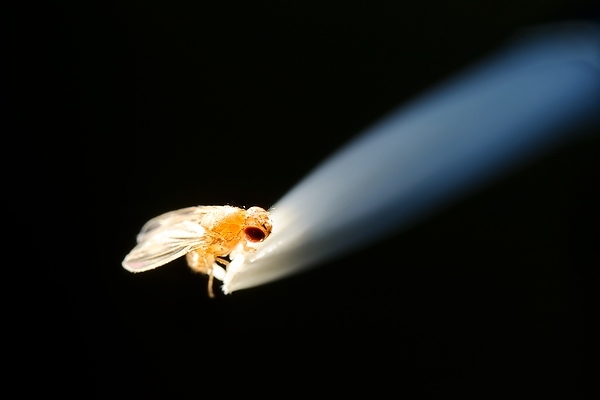|
|||||||||||||||
|

CLICK ON weeks 0 - 40 and follow along every 2 weeks of fetal development
|
|||||||||||||||||||||||||||
| A gene that allows for a new species? Between different species, each with their own specific number of chromosomes, any offspring will be infertile or unable to survive. However, scientists were able to inter-breed two species of fruit flies by knocking out one gene — "gfzf." In biology, a species is defined as a group of organisms where two individuals are capable of reproducing fertile offspring, typically using sexual reproduction. Within similar species, horses and donkeys for example, the mismatch in number of chromosomes between each animal means the two cannot breed successfully with each other — or the resulting living offspring will be infertile, as is the mule.
The research is published in the journal Science. A big surprise is that the gene that makes fruit fly hybrids unable to survive — named gfzf — is a "cell cycle-regulation gene" or "cell cycle-checkpoint gene". Gfzf normally is involved in stopping cell division and replication when defects are detected. But in the University of Utah study, when mutated and disabled, gfzf allowed for survival of male hybrids of both fruit fly species. The gfzf gene evolved quickly, which is expected in hybrid inviability genes. But is also a surprise as cell cycle-checkpoint genes usually evolve slowly being "conserved" genes. Conserved genes are maintained throughout evolution as they are essential to the existence of most organisms, and therefore can be found across most species.
Both Drosophila Melanogaster and Drosophila Simulans, have been around for a couple of million years. Geneticists have studied them ever since 1910, when they first recognized hybrids from matings between the two species died. Over the past decade, scientists have identified two other genes implicated in death and infertility of offspring. In D. Simulans, a gene named Lhr (for lethal hybrid rescue) and in the D. Melanogaster, a gene named Hmr (for hybrid male rescue). However, if either of these genes is missing — hybrid male offspring do survive. But, evidence also exists that a third, unknown gene, may also be required. Breeding mutant male hybrid fruit flies that live The Phadnis group mated mutant Drosophila Simulans males with normal Drosophila Melanogaster females, to determine which mutated genes allowed some male hybrids to live. The resulting offspring included 300,000 sterile hybrid females — and only 32 living males, also sterile. Researchers then sequenced the genomes of those six male hybrid fruit flies, and of both strains of parent fruit flies. Comparing the genomes of the six to the genomes of both sets of parents, they identified 600 to 1,200 new mutations in each of the six males. In what Phadnis calls "a surprisingly clean result," they found only a single Drosophila simulans fruit fly gene mutated in all six live hybrid males, on the third chromosome named gfzf.
Researchers don't yet know what gfzf gene's normal role is at a molecular level, but Phadnis plans to find out. He also wants to know whether more genes are involved in inviable offspring from mating the two fruit flies. Why would a gene make hybrids inviable or incapable of surviving? And why doesn't natural selection eliminate it over time? Phadnis believes such genes are selected for some characteristic yet unidentified —"the hybrid's death is an accidental consequence of that evolution." Phadnis speculates gfzf may be favored by natural selection because it helps control so-called jumping genes, which can disrupt essential genes to create disease-causing mutations. A jumping gene is a transposable element (TE) or a DNA sequence that can change its position within the genome. This sometimes creates or reverses mutations and alters the cell's genome size. Barbara McClintock discovered jumping genes, earning her a Nobel prize in 1983. Abstract Co-authors and funders The research was funded by the Howard Hughes Medical Institute, Life Sciences Research Foundation, National Institutes of Health, National Science Foundation, Mathers Foundation and Phadnis' Mario R. Capecchi Endowed Chair in Biology from the George S. and Dolores Doré Eccles Foundation. University of Utah Communications |
Jan 29, 2016 Fetal Timeline Maternal Timeline News News Archive
|
|||||||||||||||||||||||||||


